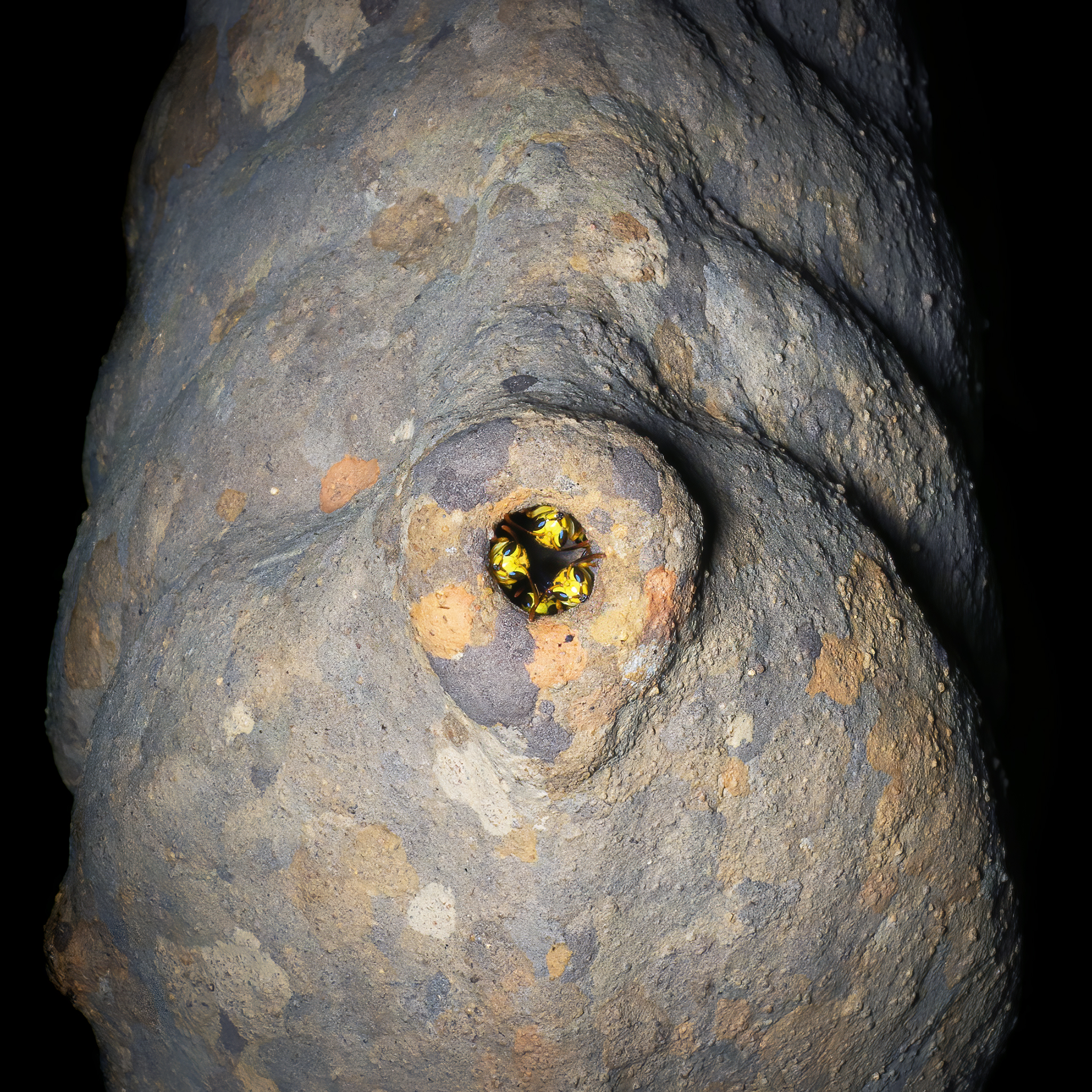“Excuse me sir. Do you have a moment to talk about our lord and saviour Jesus Christ?”
–
Sorry, that was unfair of me to compare missionaries to wasps. Missionaries are far more annoying. At least wasps usually won’t bother you as long as you leave them alone.
The wasps in this photo are Polybia emaciata, a species of wasp that doesn’t have a generally accepted common name – and you all know what that means. I get to make one up!
I’m going to call them Scaredy-Cat Wasps, but you’re going to have to read on for a little while to find out why…
Scaredy-Cat Wasps are a species of social wasp, which is quite rare in the wasp world. Out of approximately 30,000 species of wasp globally, only around 1,000 of these species are social.
While the majority of wasps lead solitary lives, social wasps live in nests which they construct out of plant material, mud and a variety of sticky substances such as tree resin. The end product often resembles a bee hive, but sadly without all of the delicious honey inside.
Solitary wasps will use their stingers both to ward off predators, and also to take down prey. Social wasps on the other hand can be particularly fearsome if you get on their bad side, swarming together and utilising their venom solely as a method of defence against potential threats to the nest.
However, not all social wasps will resort to such drastic tactics right away – and the Scaredy-Cat Wasp displays some especially unique behaviours.

Up until now, I’ve kept you in suspense as to why I’ve named these interesting insects Scaredy-Cat Wasps. But the wait is finally over…
Scaredy-Cat Wasps exhibit a very unusual trait referred to by scientists as ‘retreat behaviour’. In the majority of social wasp species, if the nest is disturbed, huge numbers of the colony will fly out to attack whatever has caused the disturbance. If this happens to be a clumsy human who accidentally bumped their head on a wasp nest, said human is probably in for a very bad time. But Scaredy-Cat Wasps, on the other hand, are pacifists, and will avoid violence at all costs.
One research paper notes that wasps of this species will typically flee or retreat into the interior of the nest whenever they are disturbed, often taking over an hour to re-emerge after going into hiding. The researchers state that the Scaredy-Cat Wasps “failed to respond aggressively to human breath, even when we blew directly into the nest entrance” – and can we just take a second to appreciate that there are wasp scientists whose job it is to go around blowing into the entrance of wasp nests. Like, who hurt you man?
Amazingly, there are even reports of residents in rural Costa Rica who relocate Scaredy-Cat Wasp nests simply by placing a finger over the entrance and then transporting it somewhere else. This would be an utterly bonkers thing to do with almost any other species of social wasp.
However, like most organisations that begin with pacifistic intentions, if you provoke them enough, Scaredy-Cat Wasps will eventually lose their patience. The researchers noted that the wasps “often responded with attack behaviour after extended disturbances”, and that “when the attack did come, it was sudden and massive, suggesting that it was coordinated by an alarm pheromone”.
Perhaps Scaredy-Cat Wasps aren’t so scared after all.

Aside from the retreat behaviour, Scaredy-Cat Wasps are also unique among social wasps in that their queens look pretty much identical to the rest of the workers. Wasp queens are typically much larger than other individuals in the colony, but for Scaredy-Cat Wasps, they’re almost indistinguishable.
Even more interestingly, these wasps have multiple queens. Like with bees and ants, all the worker wasps are females that never reproduce, and the colony also contains a small number of males. A sample colony studied in Venezuela had 30 queens, 276 workers and 26 males. However, the number of queens and males can vary dramatically among Scaredy-Cat Wasps, with the amount of queens decreasing as the amount of males increases, due to increased reproductive pressure.
If the size of the nest grows to the point of unsustainability, a handful of queens and a few hundred workers will split off and form a new colony, and the whole process begins anew.
These beautifully captivating insects defy some of the most basic expectations of wasps, and go a long way to demystifying the misconception that wasps are simply hazardous nuisances.
Nice work Scaredy-Cat Wasps 👍
–
Scaredy-Cat Wasps (Polybia emaciata), Los Amigos Biological Station, Madre de Dios, Peru


